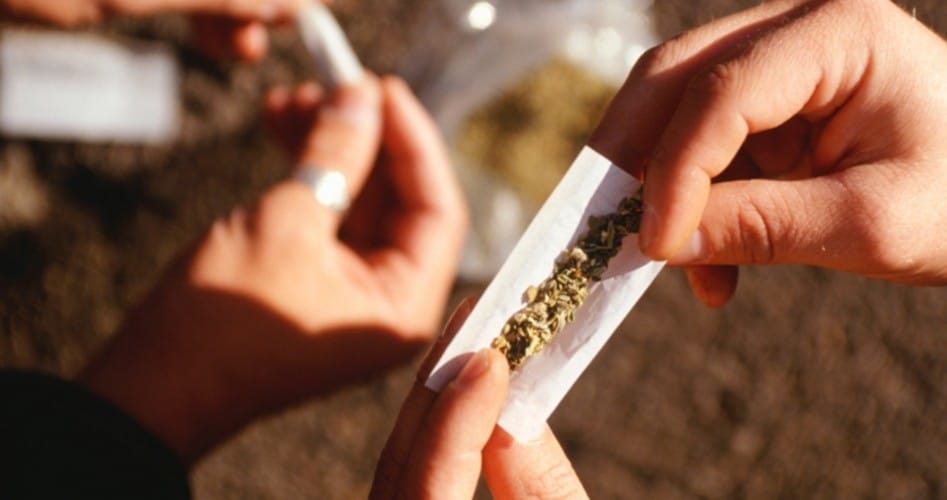
Cheech and Chong certainly wouldn’t approve. But with Canada poised to allow recreational marijuana use, the head of the World Health Organization has a message about legalizing drugs: Just say no — or at least just maybe not.
As the AFP reports:
WHO chief Tedros Adhanom Ghebreyesus, who was in the Philippines for a regional meeting, told AFP the organisation supports availability of drugs like marijuana for medical reasons.
“Of course we believe that people who need it, especially for pain management, should have it. There should be access,” he said.
That access should be clearly regulated, he added, and throwing open the doors to full legalisation carries its own health risks.
“I think any addictive substance is not good for human health,” he said. “We wouldn’t encourage countries to follow those who are actually … legalising it.”
Right now there are only two nations that have fully legalized cannabis: Canada, where the legalization takes effect October 17; and Uruguay, which okayed the drug in 2013. Moreover, “Nine American states have also given the green light to recreational use, and many more allow it for medical purposes,” the AFP tells us.
For sure, this reflects the direction in which the West is headed. The arguments that drug legalization would remove organized crime from the equation, provide another revenue source for government (taxation), and ensure drug purity are persuasive to millions. Moreover, many Americans have an emotional vested interest is supporting legalization because they’ve used pot themselves and, in accordance with man’s nature, have justified the practice in their minds. Yet there’s much to consider.
First, only the most extreme libertarians advocate legalizing all drugs, as some are actually deadly. Just consider what’s known as “bath salts,” a drug “that produces a meth-like high and sometimes violent behavior in users,” as NPR reported in 2011. In one Florida incident, a user ripped off his clothes and maniacally attacked another man, biting off parts of the victim’s face and growling at police before being shot. So it’s not a matter of just “legalizing drugs,” but of where we draw the line.
As to this, marijuana legalization’s proponents claim that one already legal “drug,” alcohol, is actually more dangerous than pot. Having experience with someone who had a severe drinking problem, I’ll say this is true — when alcohol is misused. Seldom contrasted, however, are the two “drugs’” effects when used as intended.
Most people agree that drunkenness is a problem, and most who imbibe have one or two drinks. But marijuana users never have just one or two puffs (with all due respect to Bill Clinton, who tried it but didn’t “inhale”).
The purpose every time they light up is to get “drunk” (high). The goal is a mind-altering experience.
This crucial distinction is generally overlooked.
Additionally, some experts say marijuana use is quite dangerous. As the Daily Mail related in 2014, reporting the findings of a 20-year study:
• One in six teenagers who regularly smoke the drug become dependent on it
• Cannabis doubles the risk of developing psychotic disorders, including schizophrenia
• Cannabis users do worse at school. Heavy use in adolescence appears to impair intellectual development
• One in 10 adults who regularly smoke the drug become dependent on it and those who use it are more likely to go on to use harder drugs
• Driving after smoking cannabis doubles the risk of a car crash, a risk which increases substantially if the driver has also had a drink
• Smoking it while pregnant reduces the baby’s birth weight
• Heavy users experience withdrawal symptoms
• Rates of recovery from cannabis dependence among those seeking treatment are similar to those for alcohol
Other experts have also sounded the alarm. One is Dr. Michael Savage, who aside from being a well-renowned talk-show host is a trained epidemiologist and has authored more than a dozen books on health and nutrition. As I wrote in 2014:
During a 2010 radio segment — at the end of which he named approximately two dozen chemicals found in cannabis smoke — he said “Marijuana is far more dangerous than tobacco….” Savage, who nonetheless believes in the drug’s decriminalization, continued, “Mainstream marijuana has ammonia levels that are up to 20 fold greater than that found in tobacco. Hydrogen cyanide, nitrogen oxide, and some aromatic amines, which are all carcinogenic, were found in marijuana smoke at concentrations three to five times those found in tobacco smoke.”
Savage also mentioned that there’s mercury in much of cannabis today because it may be grown in mercury-rich volcanic soil. He then alluded to mad-hatter syndrome, thus named because hatters many years ago would often develop mercury-induced dementia due to exposure to the metal, which they used to stiffen the fibers of their felt hats. This phenomenon led to the descriptive “Mad as a hatter.”
There are also studies indicating that marijuana use lowers I.Q.
Leaving aside the fact that the World Health Organization has no business telling countries how they should regulate marijuana use, the U.S. government has no constitutional authority to regulate drugs either. Such authority is reserved for the states and the people under the U.S. Constitution.
But whatever one’s position on cannabis’ legalization, the larger issue is its legitimization (of course, the latter begets the former). Whether pot or our all-too-common legal psychotropic drugs, they’re called mind-altering substances because they’re just that: mind-altering. And as poet William Blake warned, the “Eye altering alters all.”


